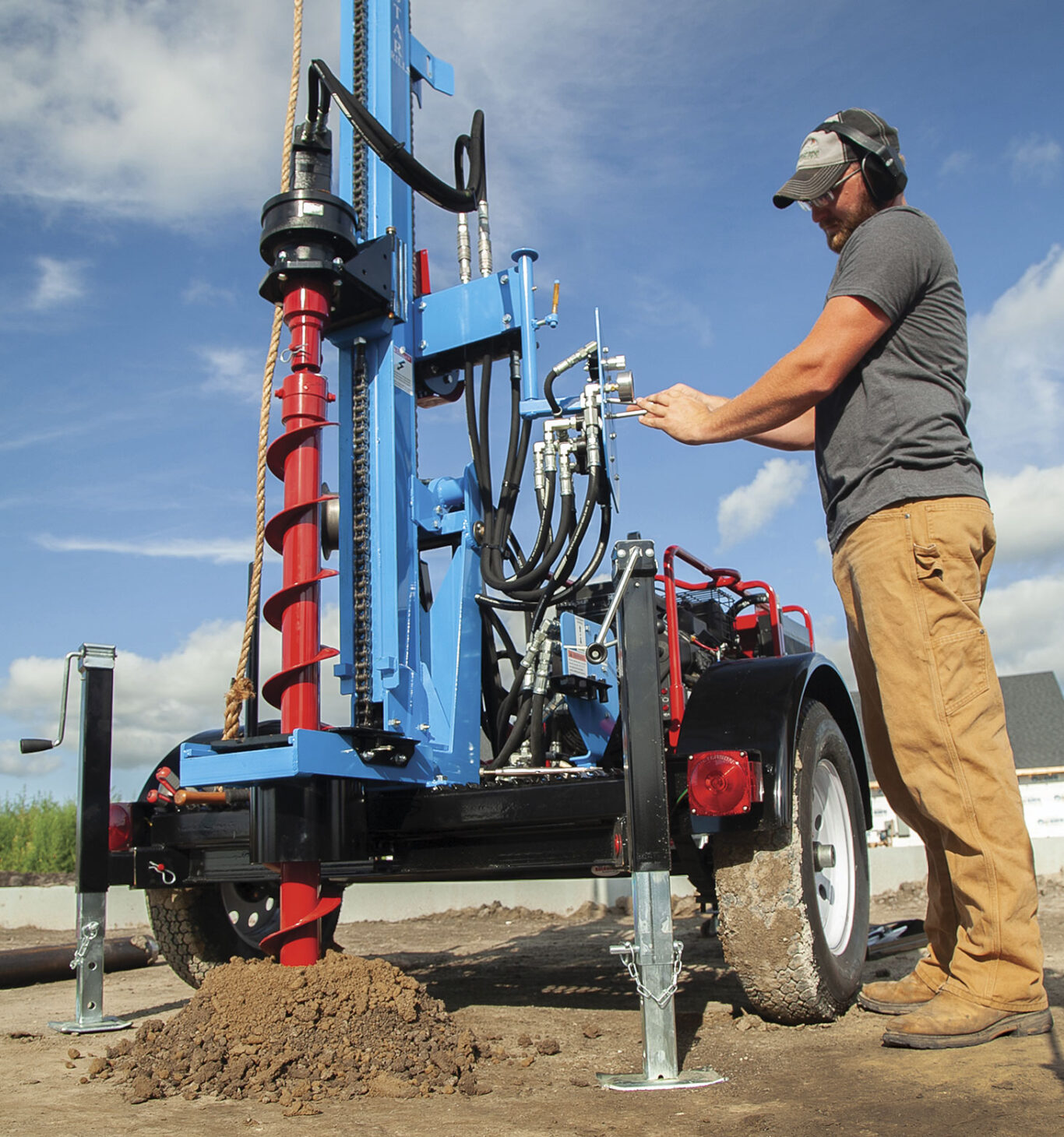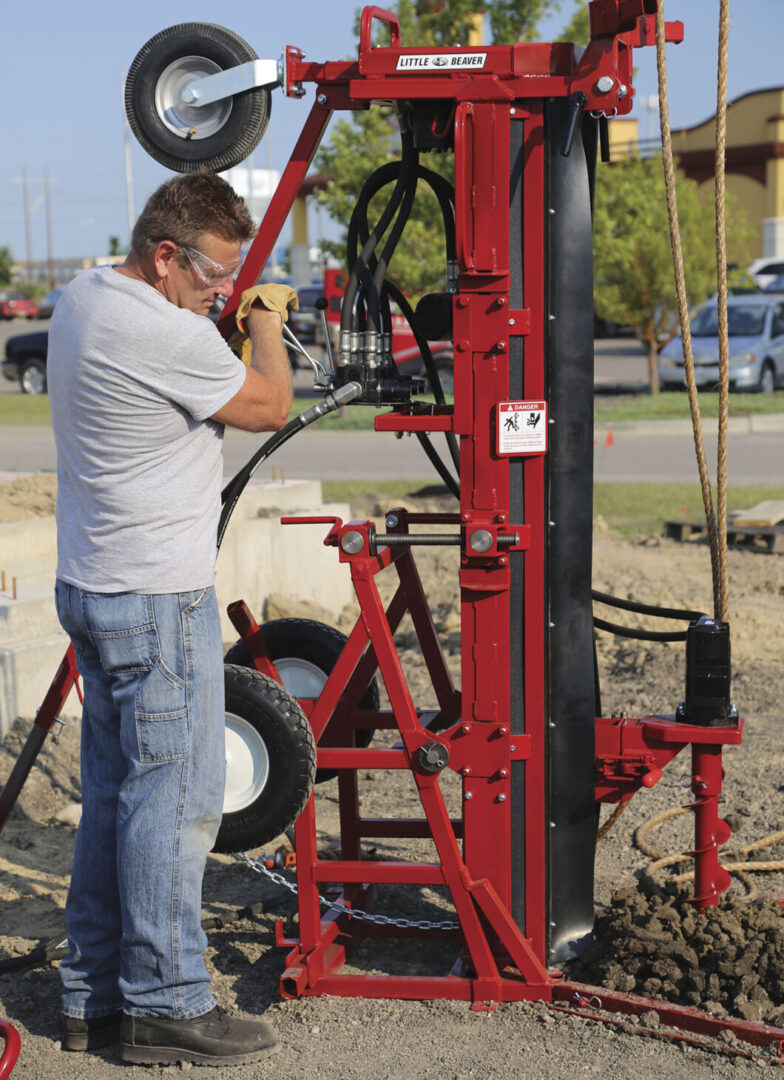
Mistakes in data recording have never been more costly than they are today. Spatial data plays a role in ensuring the safe navigation of aircraft, managing financial transactions stored on servers, and determining a vehicle’s odometer reading.
Society generally relies on the accuracy of co-ordinates, figures and numbers displayed on screens as truth. When this information differs from reality, it can lead to chaos and unwise decisions.
By comparison, accurately recording soil sampling data and using proper sampling equipment may seem insignificant. However, the data will be used to make important and long-lasting decisions, such as choosing the location for a new home or rotating crops that feed an entire country.
There’s plenty of opportunity to use collection equipment precisely and to record, check and re-check data. The data from the sample determines the soil quality, making it crucial to collect and record data accurately at every opportunity. Properly implementing a few fundamental pieces of equipment and recording essential elements during sampling can save time, reduce cost and streamline operations for experienced geotechnical engineers and those breaking into soil sampling.
The Minnesota Pollution Control Agency and the U.S. Environmental Protection Agency have established guidelines for thorough soil sampling, which can be recorded in the field before testing the sample in a lab.
Establishing a recording system before entering the sample site requires a dedicated soil sample log and pre-labelled containers. Preparing materials allows contractors to focus on recording data accurately and implement the proper sampling equipment, like cathead kits, safety hammers and split spoon samplers.
Here’s how to begin recording soil samples:
Unique identifier
Start by assigning a unique identifier to the sample area, such as SA-1 – Sample Area One. From there, the terrain layout and soil sample requirements will largely dictate the labelling method used, but sample areas can be broken down further into sample sites, like SS-1, SS-2 and so on. Borings can then be assigned to specific sample sites within the overall sample area. For example, SS-1 can contain borings one to 12, or B-1, B-2, etc., with individual boring containers and the logbook labelled with this information.
Referencing and recording data will be much more fluid after establishing an identification system like the one above. From there, the contractor can decide what specifics should be recorded on the individual sample containers and what should be in the logbook. For example, recording boring co-ordinates, dates and times in both locations is a good practice.
Date and time
Once containers have a label, the logbook is set up, and data recording priorities have been established, contractors should note the date and time they arrive at the sample area and the times for every boring within a sample site. For example, a contractor arrives at SA-1 at 9 a.m., takes their first boring, B-1, at the first sample site, SS-1, at 9:15 a.m., the second boring at 9:20 a.m., etc. Be sure to record the last boring time and the time range for the sample site, SS-1, before moving on to SS-2 and restarting the process. With soil conditions constantly changing, the tiniest detail from time of year to time of day can impact the results and how they are interpreted.
Soil and weather conditions
Take note of weather and soil conditions upon arrival at the sample area and consider how these may change during the collection process. Depending on soil type or conditions, a contractor may divide a sample area into sample sites, but individual boring conditions can still vary. Soil colour is also important to note as it can give clues to the mineral content and soil condition.
Soil condition descriptors can be any relevant aspect, such as smooth, gritty, sand, clay, etc. At this point, soil conditions can also allude to specialty equipment requirements and techniques that may be needed.
Sampling techniques, drill type, boring depth and more
Switching to a hollow stem auger may be necessary if the soil is sandy and loose. Hollow stem augers create a natural casing in and protect the sample from contamination by the unstable surrounding soil. A hollow stem auger’s centre rod and plug can be removed, providing a clean path to insert a soil sampler. If the environment makes this equipment change necessary, record it in the notes.
A sandy and confined environment may also call for a more maneuverable drill, such as a hydraulic earth drill or post-hole digger. These drills can be paired with tripod kits to ensure accurate sampling to 35 feet. More robust drills can be samples in tough clay and remain maneuverable and compact by utilizing stabilizing legs, tower kits, cathead kits and manual safety hammers to reach depths down to 100 feet. Truck and trailer-mounted drill options can reach similar depths.

These may come with automatic hammers to ensure accuracy and make quick work of tough soils into more easily accessed sample sites. Look for manufacturers that produce soil sampling accessories compatible with their drills to ensure easy setup and smooth operation.
Record any equipment changes due to different soil conditions, whether that’s switching augers, using hand sampling tools or bringing in an entirely different drill rig. This will make a good reference for tracing irregular sample results to possible equipment-soil mismatches.
Equipment model names and drill types should also be noted. This may be the same for an entire sample area or change from site to site based on soil conditions and sample requirements. For example, a contractor may use a hydraulic earth drill to reach a target depth and then use a manual or automatic safety hammer to drive in a split spoon sampler.
These are all essential aspects of the sampling process that should be recorded. This helps in case of sampling anomalies or user errors, such as forgetting to discard the top few inches of a sample from a split spoon taken without using a hollow stem auger, as this commonly contains material that has dislodged from the walls of the borehole.
Additionally, note the borehole depth and size of the soil sampler. For example, “B-1 taken at a borehole depth of 20 feet with a 24-inch split spoon sampler.” At this point in data recording, consider noting the blow counts needed to drive the soil sampler to the desired depth. This should be pointed out for every borehole.
Photos, photos, photos
Photos are an important part of the sampling documentation process. While the camera on a smartphone will do, a dedicated field-ready camera with proper weather sealing and a removable memory card is ideal. Take landscape shots of the sample area for cross-referencing with a map and boring co-ordinates for confirmation or questions that may arise after testing. Pictures of the sampling process at every borehole can also be helpful and highlight mistakes when reviewed later.
Additionally, the surrounding soil, entire soil sample and any individual sections chosen from the sample should be photographed for later reference. The camera used for site photography can be an excellent third source for recording soil date and time, in addition to the logbook and containers.
Handling the sample
Different industries and contractors establish operating procedures for handling and storing samples. An overall guidance is to not alter the sample’s chemical properties based on which properties are of interest. However, an airtight container for storage in the field is essential. Place the samples in the shade, preferably in a cooler, until they can be refrigerated or sent to a lab. Individual labs may offer further shipping and storage recommendations.
While the impact of soil sampling may rely solely on trusted systems, such as a testing lab, to provide reliable data, it’s important to remember that the person in the field is still flying the plane. A contractor’s actions will determine how closely the soil sample that arrives at the lab represents the soil at the jobsite. A well-constructed soil sample log, diligent note-taking and proper sampling equipment will ensure that every borehole counts and any decisions made will be informed.